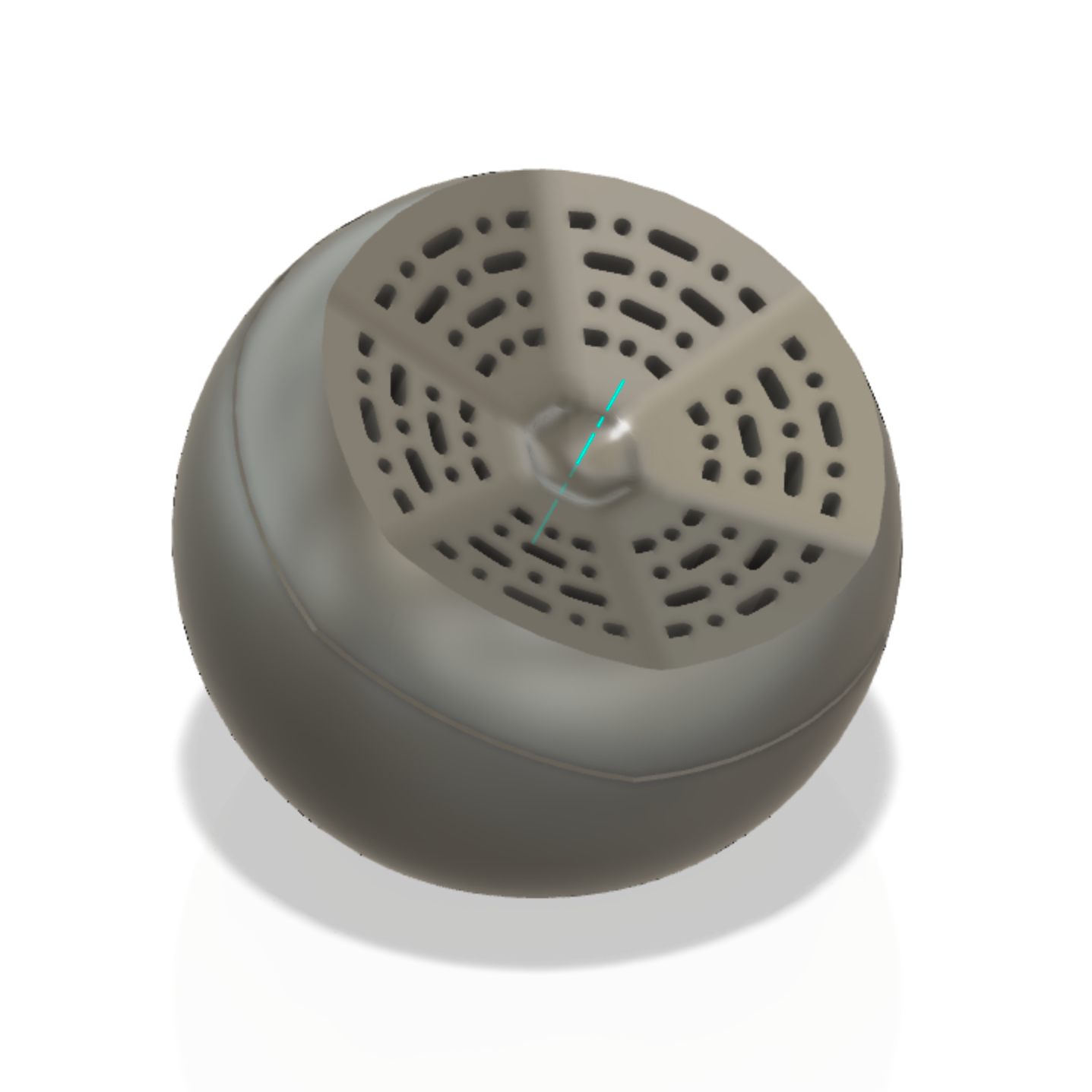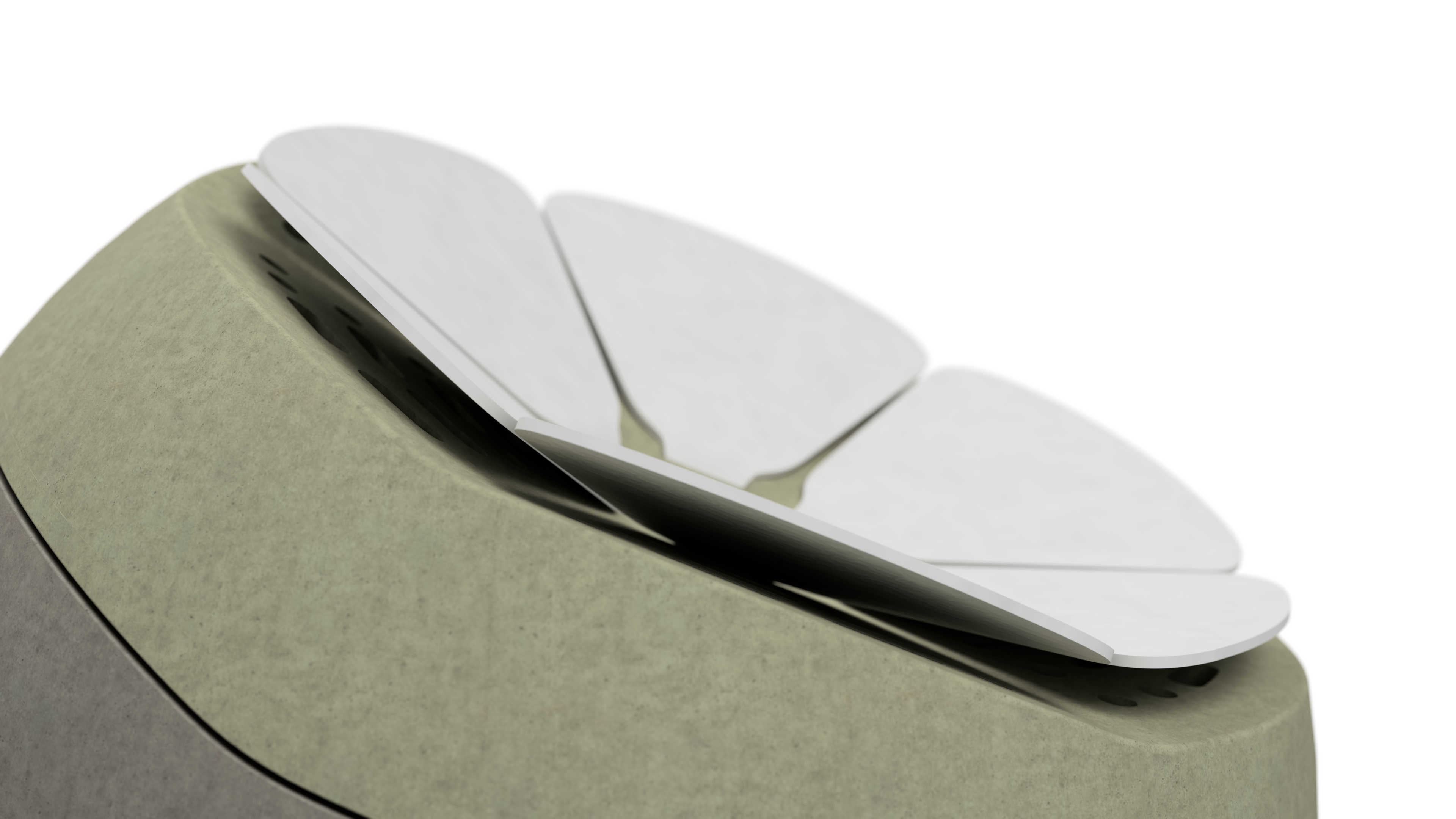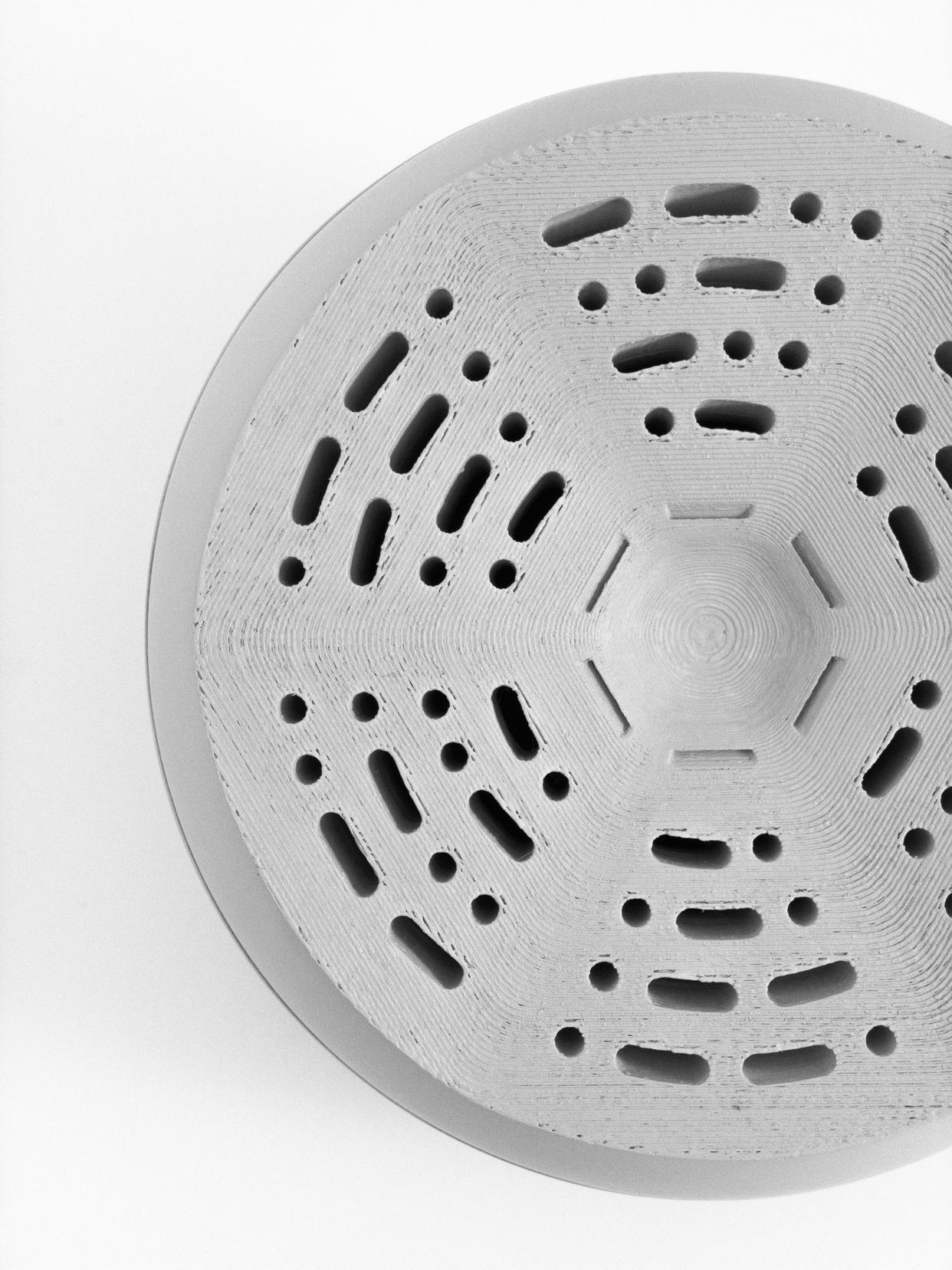

Oro is a humidifier designed to operate passively and complement the atmosphere of the surrounding room.
A porous reed draws water upwards from inside the reservoir through capillary action. Six petals fold upwards when saturated, similar to how a pinecone opens and closes. This movement serves as a visual indicator that the device is active and reveals a pattern of openings that enable even greater evaporation.
Once equilibrium is achieved, or no water remains in the reservoir, the petals fall back flush with the top surface.
Roles
Industrial design
Sketching & ideation
Rapid prototyping
3D CAD
Engineering product design
Industrial design
Sketching & ideation
Rapid prototyping
3D CAD
Engineering product design
Type
Individual project
Course
Designing for Complex Products Systems
Duration
August – October 2019
Individual project
Course
Designing for Complex Products Systems
Duration
August – October 2019

Context
The process began by distilling the function of a humidifier to its most elementary level: increase the humidity content of a room. A survey of existing humidifiers for sale revealed some common issues. Frequently fashioned out of glossy injected-molded plastic with pseudo-technological interfaces, these are objects that have little aesthetic staying power. Most humidifiers require external power as well, limiting the placement of the device near outlets and precariously juxtaposing electricity with liters of water.
![]()
![]()
![]()


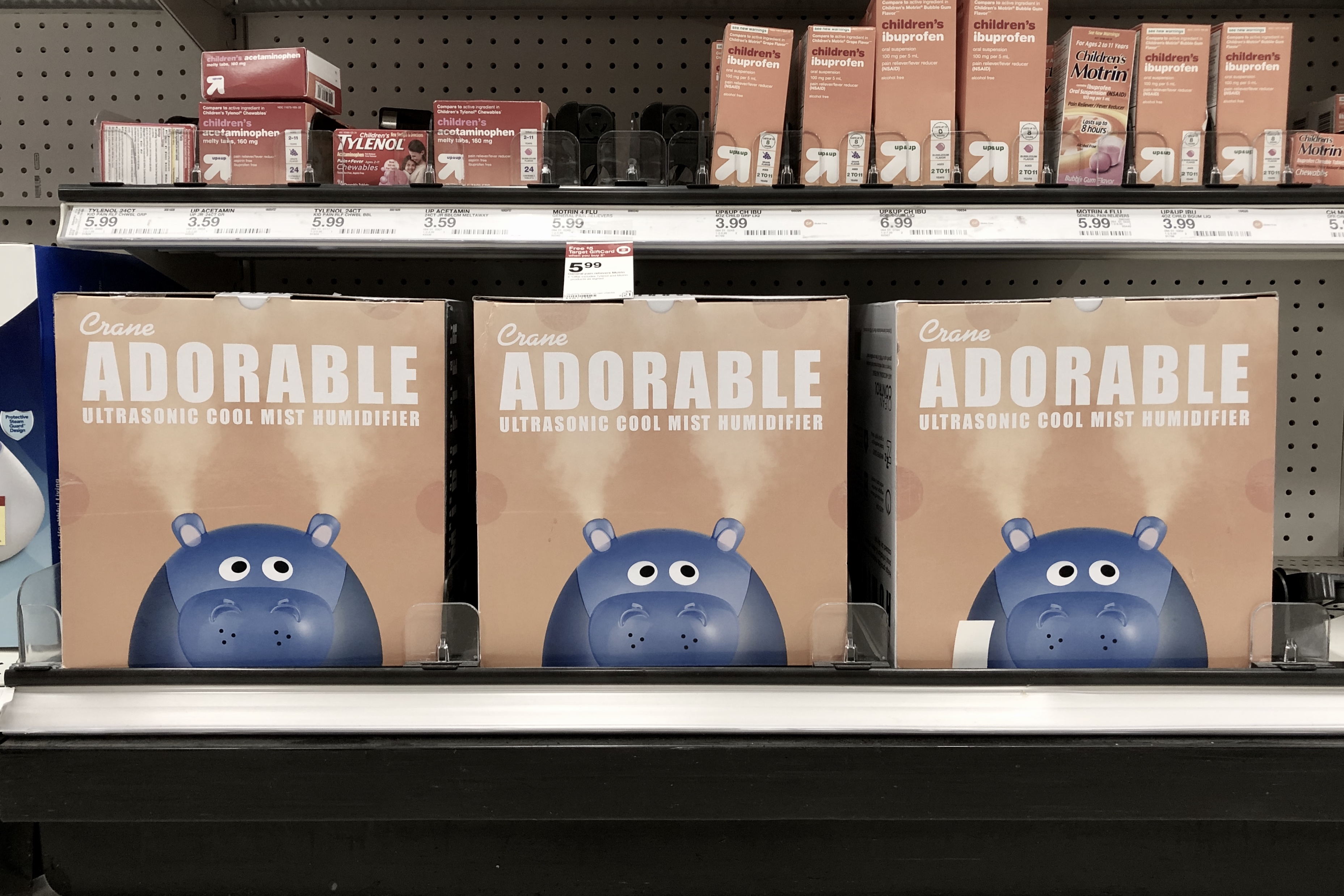
Insights
Based on the general overlook of humidifiers, research was performed with the goal of eliciting what sorts of relationships people had with the humidifiers that they owned. Participants were asked to draw their humidifiers while talking about its location in their rooms, how they interacted with it, and how they felt during the steps of activating, refilling, and cleaning.
The tone of these responses was quite negative, ranging from indifference to the aesthetic quality of the device to disgust at bacterial growth inside reservoirs and enmity to cleaning out interior crevices.
The tone of these responses was quite negative, ranging from indifference to the aesthetic quality of the device to disgust at bacterial growth inside reservoirs and enmity to cleaning out interior crevices.


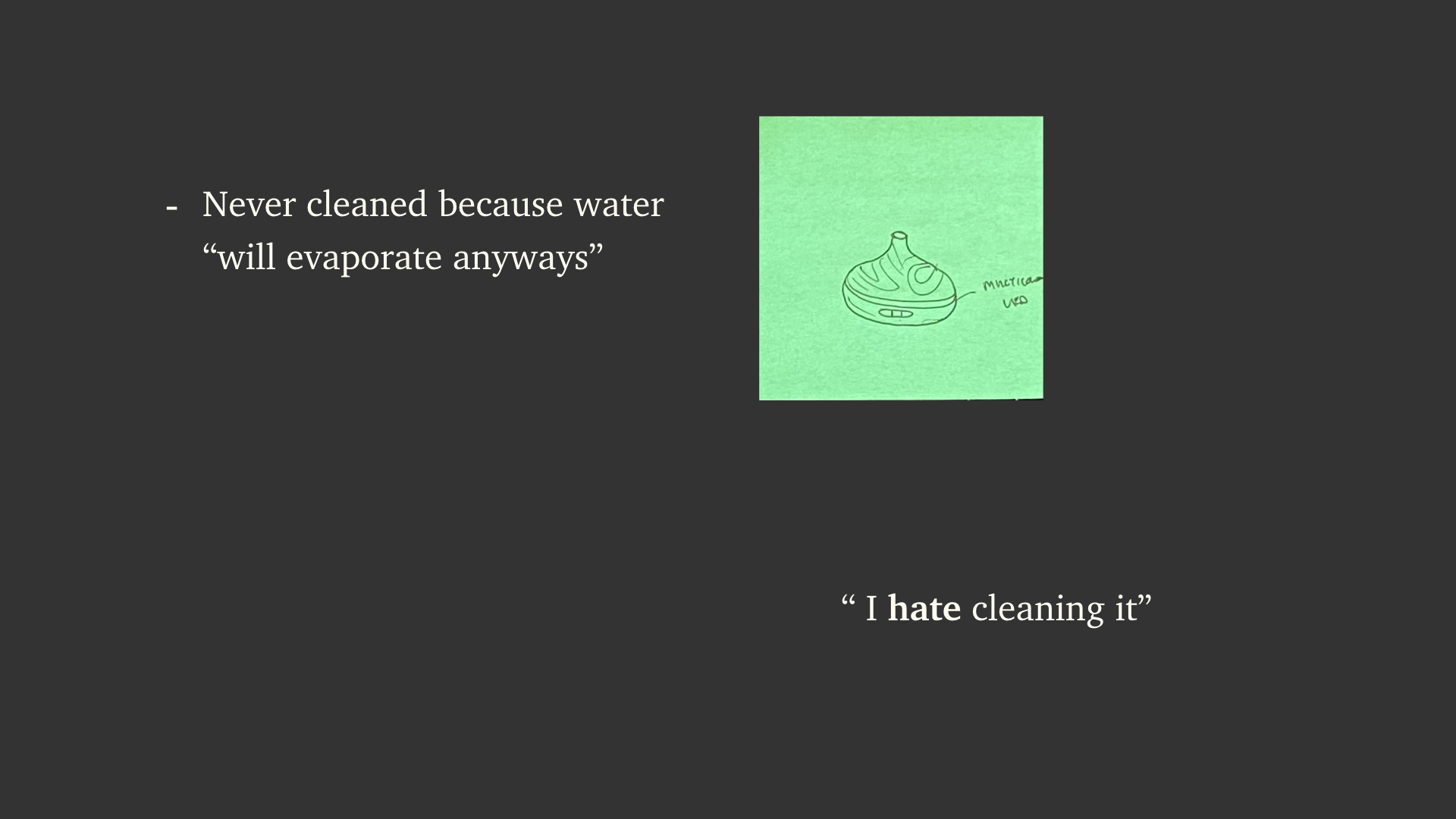
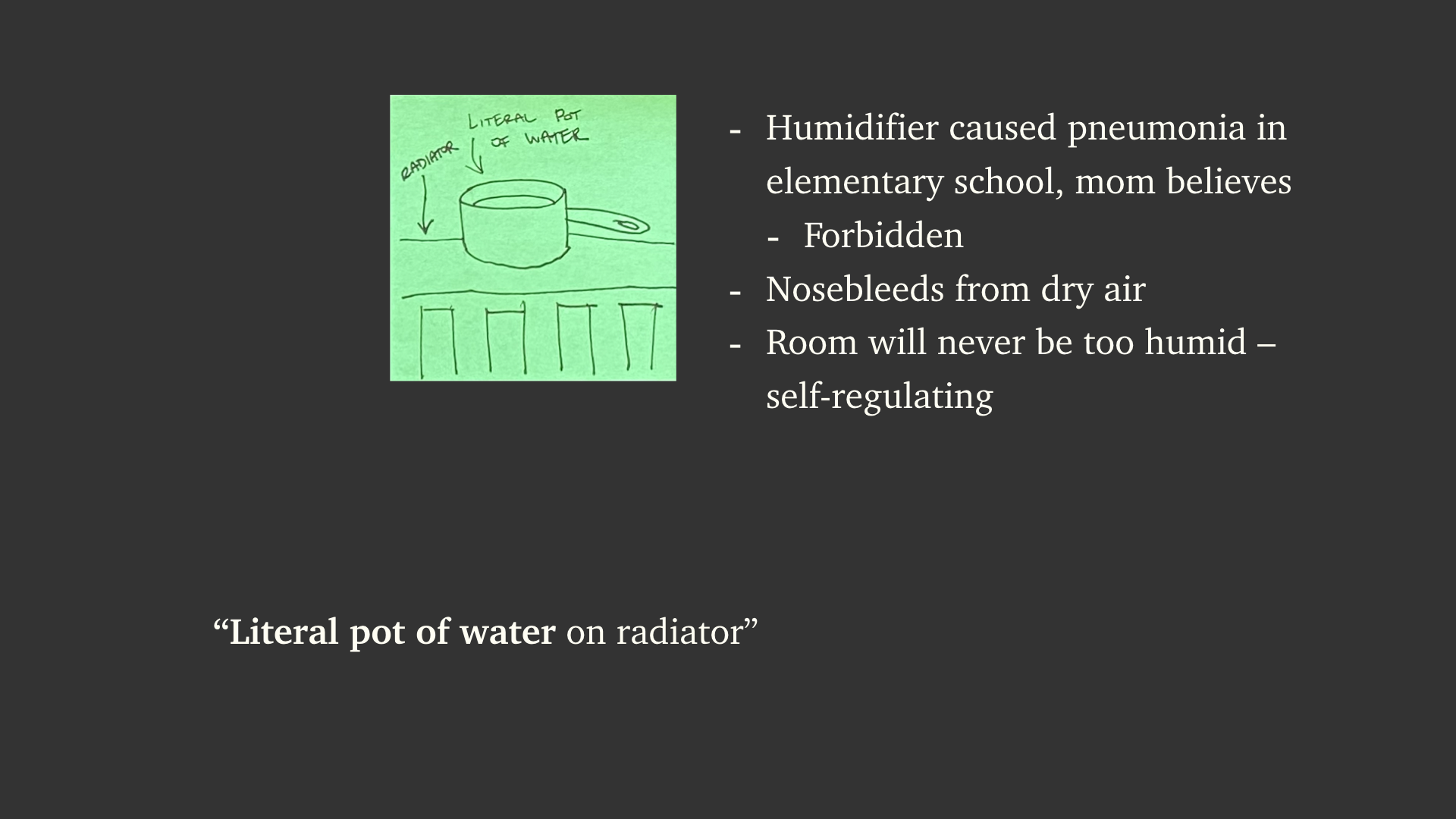
Next, people were asked to recall the room where they felt most at home – somewhere where they would lean back and read a book, watch TV, perhaps take a nap – and identify the objects in that room that enhanced the ambiance of that space. In addition to modeling this room on a small scale using model furniture, participants were also asked to model these beneficial objects in clay and place them inside the model room.
While a few different types of objects were modeled, a pattern emerged: many of the items that people identified were plants.
While a few different types of objects were modeled, a pattern emerged: many of the items that people identified were plants.






To investigate what exactly drew people to seek having plants in their homes, a third group was asked to draw what plants they had in context, as well as describing what qualities plants had that were appealing.

Plantlike nature


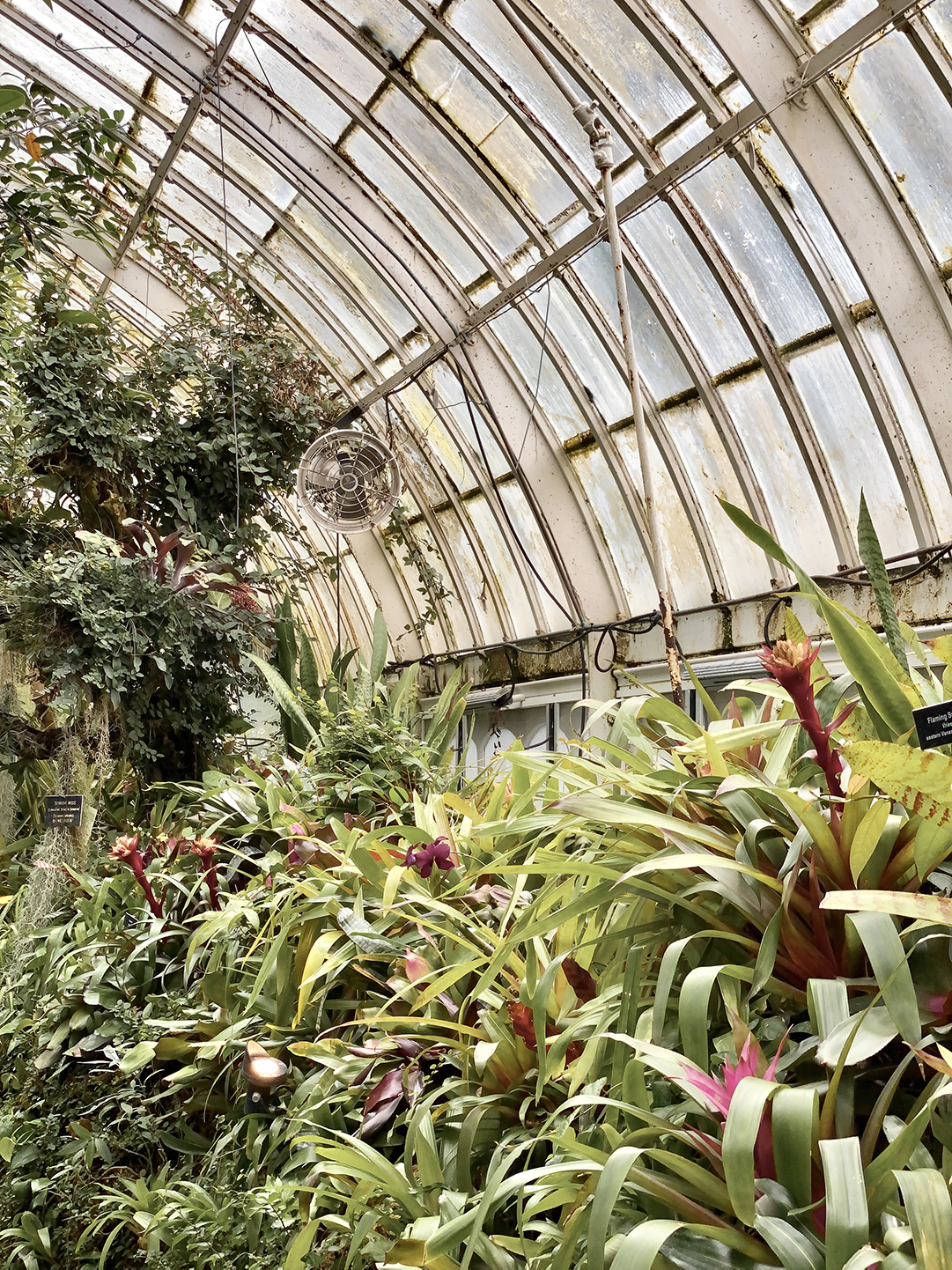
Based on the positive relationships that people revealed to have with their plants, Oro was designed to possess some of the same characteristics.
- Self-regulating and actuating
- Easy to maintain
- Small enough to fit on a shelf
- Accentuates living space
During Oro’s development, I was in conversation with Professor Lining Yao of CMU’s Morphing Matter Lab, who introduced me to the principle of hygromorphic bio-actuators as a means of transformation. The transformation of pinecones that occurs when they come into contact with water and dry out, and vice versa, is actually a demonstration of hydromorphic bilayer fluid transport principle at work.
Simply put, the fibers in each scale are arranged in two directions – on the top, they run horizontally, and on the bottom they’re arranged vertically. When the scale comes into contact with water, the moisture causes the fibers to expand. The top fibers are longitudinally-arranged, so only the fibers on the bottom expand significantly. This difference in expansion along the x-y plane causes the scale to curl upwards when wet. Since the fibers are dimensionally stable, they return to their original size as the pinecone dries. This effect is essentially infinitely reversible.
Simply put, the fibers in each scale are arranged in two directions – on the top, they run horizontally, and on the bottom they’re arranged vertically. When the scale comes into contact with water, the moisture causes the fibers to expand. The top fibers are longitudinally-arranged, so only the fibers on the bottom expand significantly. This difference in expansion along the x-y plane causes the scale to curl upwards when wet. Since the fibers are dimensionally stable, they return to their original size as the pinecone dries. This effect is essentially infinitely reversible.
 Wet Pinecone Time Lapse: Jason Glydewell on YouTube
Wet Pinecone Time Lapse: Jason Glydewell on YouTubeProf. Yao recommended a high density cellulose fiber sheet with a thin polymer substrate as a porous material that would yield the desired hygromorphic transformation. Combinations of different paper-like materials and thin plastic sheeting were tested for speed of capillary effect, degree of transformation, and repeatability.
Form development





















